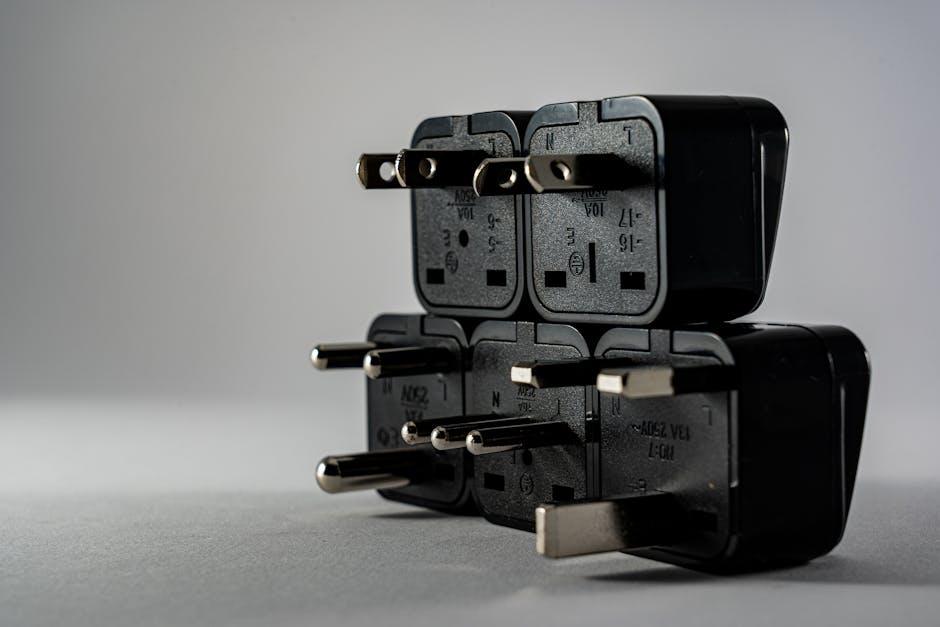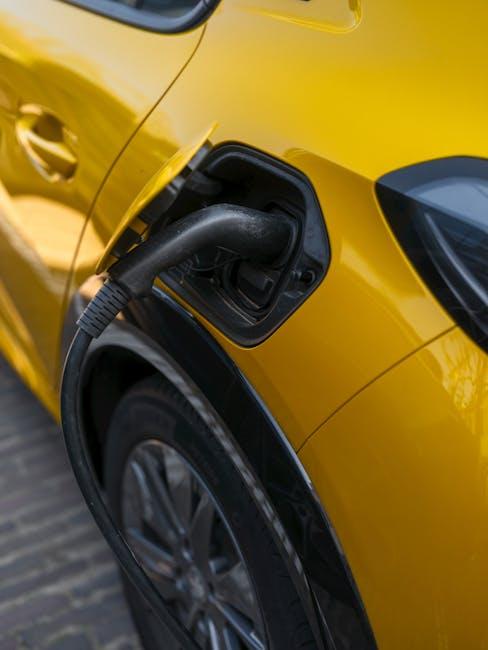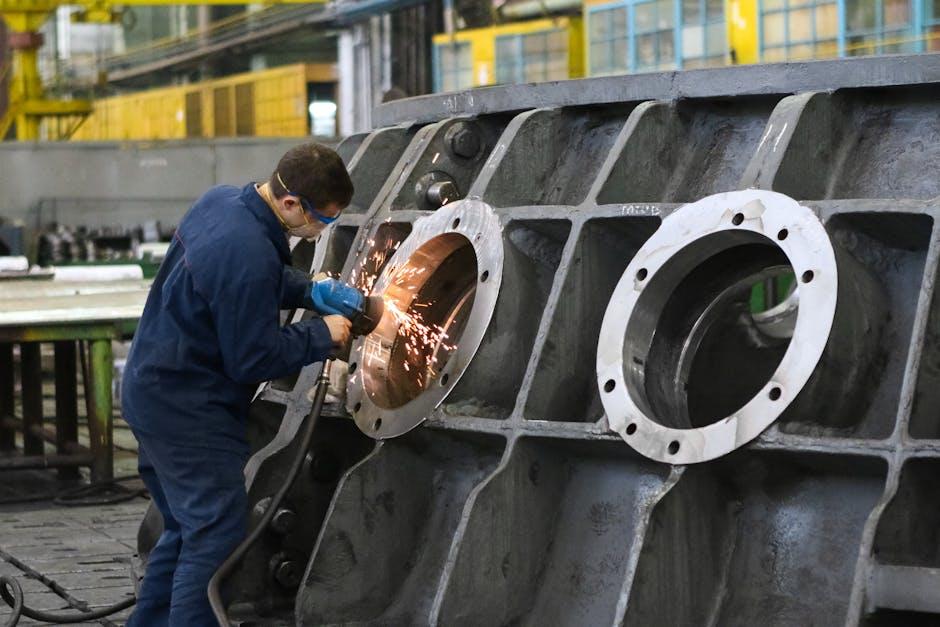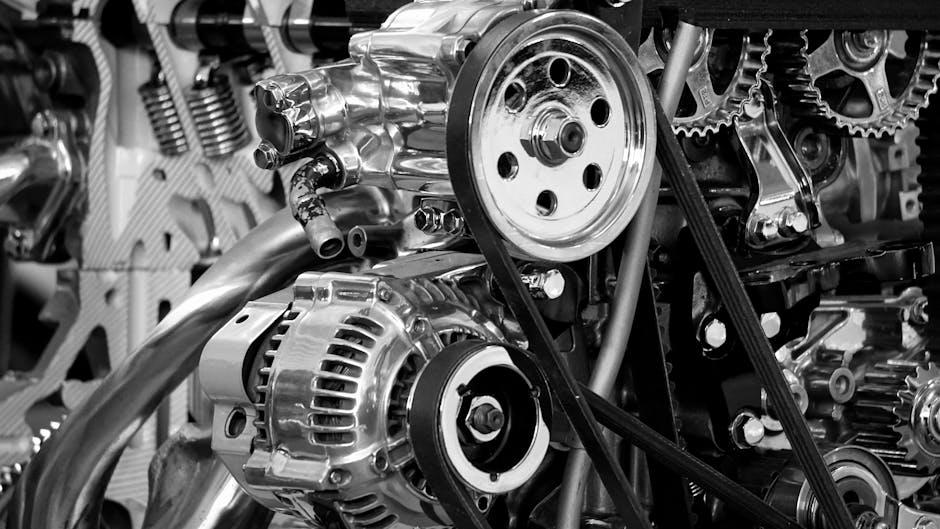In the intricate symphony of an engine’s operation, countless components work in harmony to transform fuel into motion. Among these unsung heroes lies the humble spark plug—a small yet vital part that ignites the very heart of your vehicle. Often overlooked, spark plugs play a critical role in determining not just whether an engine runs, but how efficiently and smoothly it performs. This article delves into the essential function of spark plugs, exploring how their condition and quality impact engine performance, fuel efficiency, and overall driving experience. Whether you’re a seasoned mechanic or a curious driver, understanding the spark plug’s role offers valuable insight into the complex dance that powers every journey.
Table of Contents
- Understanding the Spark Plug’s Function in Combustion Efficiency
- Materials and Design Variations Impacting Spark Plug Longevity
- How Spark Plug Condition Influences Engine Power and Fuel Economy
- Signs of Spark Plug Wear and When to Replace Them
- Choosing the Right Spark Plug for Your Engine Type
- Maintenance Tips to Maximize Spark Plug Performance
- Q&A
- The Way Forward

Understanding the Spark Plug’s Function in Combustion Efficiency
At the heart of every combustion engine lies a precise moment where fuel and air ignite to produce power—a moment orchestrated brilliantly by the spark plug. This tiny yet mighty component delivers a high-voltage electrical spark, igniting the air-fuel mixture within the combustion chamber. By ensuring a clean and consistent spark, it maximizes fuel burn efficiency, directly influencing engine responsiveness, power output, and emissions. Without a reliable spark, engines may suffer misfires, diminished fuel economy, and heightened exhaust pollutants, all signs of compromised combustion efficiency.
Several factors contribute to the spark plug’s effectiveness in this critical ignition phase:
- Electrode Gap: A properly set gap ensures the spark bridges correctly to ignite the mixture efficiently.
- Heat Range: Determines how quickly the plug dissipates heat, affecting performance and lifespan.
- Material Composition: Innovations such as iridium and platinum tips offer longevity and superior sparking ability.
| Parameter | Impact on Combustion |
|---|---|
| Electrode Gap | Precise spark delivery |
| Heat Range | Prevents fouling and overheating |
| Material | Enhances durability & spark consistency |

Materials and Design Variations Impacting Spark Plug Longevity
Spark plugs come crafted from a variety of material compositions, each influencing their durability and efficiency. For instance, copper core electrodes excel at heat dissipation but tend to wear faster, making them suitable for everyday vehicles with moderate performance needs. Conversely, platinum and iridium tips resist corrosion and erosion, significantly extending lifespan by maintaining a sharper electrode point for consistent sparks. This precision reduces the energy required for ignition, ultimately contributing to steadier engine performance over time.
Beyond materials, the design variations such as electrode configuration and heat range play a critical role. Common designs include:
- Single electrode – traditional design offering ease of replacement and moderate longevity.
- Multi-ground electrodes – providing multiple spark paths for enhanced reliability.
- Fine-wire electrodes – minimizing voltage demand and promoting efficient combustion.
| Material | Typical Lifespan | Performance Benefit |
|---|---|---|
| Copper | 20,000 – 30,000 miles | Excellent heat conduction |
| Platinum | 60,000 – 100,000 miles | Corrosion resistance |
| Iridium | Up to 120,000 miles | Highest durability & precision |

How Spark Plug Condition Influences Engine Power and Fuel Economy
Maintaining the optimal condition of your spark plugs is crucial for unlocking maximum engine power and maintaining fuel efficiency. Worn or fouled spark plugs can cause inconsistent combustion, leading to a noticeable drop in power output and increased fuel consumption. When spark plugs fail to ignite the air-fuel mixture properly, the engine struggles to produce smooth and reliable power, often resulting in sluggish acceleration and rough idling. On the other hand, clean and correctly gapped spark plugs enable full combustion, optimizing each explosion to deliver the best performance your engine can offer.
Key effects of spark plug condition on engine performance and economy include:
- Improved combustion efficiency: Clean plugs ignite fuel with more precision, reducing wasted fuel.
- Reduced emissions: Efficient firing decreases harmful exhaust emissions.
- Better throttle response: The engine reacts quicker to acceleration inputs.
- Longer engine lifespan: Stable combustion minimizes stress on engine components.
| Plug Condition | Engine Power | Fuel Economy |
|---|---|---|
| New | Optimal | High |
| Worn | Decreased | Lower |
| Fouled | Unstable | Poor |

Signs of Spark Plug Wear and When to Replace Them
When spark plugs start to wear out, your engine’s smooth rhythm begins to falter. A telltale sign is rough idling or frequent misfires, which occur because the spark can no longer ignite the air-fuel mixture effectively. You might also notice difficulty starting the engine or a drop in overall power and fuel efficiency. These symptoms are subtle whispers from your engine, urging attention before damage escalates. Visual inspection can be revealing—a worn spark plug often has black, sooty deposits, cracks, or eroded electrodes, signaling the need for replacement.
To keep your vehicle performing at its best, consider the following indicators as your rule of thumb:
- Engine misfires or hesitation during acceleration
- Reduced fuel economy despite consistent driving habits
- Hard starts or the engine failing to start promptly
- Visible deposits, corrosion, or worn gaps on the spark plug tips
| Condition | What It Means | Action |
|---|---|---|
| Black soot | Rich fuel mixture or oil leakage | Clean or replace spark plug |
| Worn electrodes | Reduced spark intensity | Replace immediately |
| White deposits | Overheating or deposit buildup | Inspect engine tuning and replace plug |
| Cracks or damage | Mechanical failure | Replace immediately |

Choosing the Right Spark Plug for Your Engine Type
Every engine type demands a spark plug crafted to meet its specific combustion requirements. For instance, high-performance engines often benefit from iridium or platinum spark plugs, which provide superior durability and a stronger spark, ensuring efficient ignition under extreme conditions. On the other hand, standard engines typically perform well with copper spark plugs, prized for their excellent thermal conductivity and affordability. Choosing the right plug involves understanding factors like heat range, electrode design, and gap size, all of which play a pivotal role in optimizing combustion efficiency and, ultimately, engine output.
Consider the following quick guide when selecting a spark plug for your engine:
- Heat Range: Match the plug’s heat range to the engine’s operating temperature to avoid fouling or overheating.
- Electrode Material: Iridium for longevity, platinum for balance, copper for conductivity.
- Gap Size: Correct gap setting ensures consistent spark and prevents misfires.
- Engine Type: Diesel engines differ from gasoline engines in plugs and ignition style.
| Engine Type | Recommended Spark Plug | Primary Benefit |
|---|---|---|
| High-Performance Gasoline | Iridium | Enhanced spark longevity and strength |
| Standard Gasoline | Copper | Excellent conductivity at low cost |
| Turbocharged | Platinum | Improved durability under pressure |
| Diesel (Glow Plug) | Specialized Glow Plug | Efficient cold starts and combustion |

Maintenance Tips to Maximize Spark Plug Performance
Ensuring your spark plugs operate at their peak involves a combination of regular inspection, cleaning, and timely replacement. Start by visually inspecting the spark plugs every 20,000 miles for signs of wear like carbon deposits, erosion, or cracked insulators. Using a spark plug socket and gap gauge, you can verify that the electrodes maintain the correct gap, which is crucial for optimal spark delivery. Dirty or fouled plugs can be gently cleaned with a wire brush or specialized spark plug cleaner to restore performance without the immediate need for replacement.
Adopting a routine maintenance schedule helps prevent common engine issues tied to spark plugs. Consider these best practices to maintain efficiency:
- Replace spark plugs at manufacturer-recommended intervals.
- Use the right spark plug type for your engine model.
- Avoid excessive heat or cold shock to protect spark plug integrity.
- Apply anti-seize compound sparingly when reinstalling.
| Maintenance Task | Interval | Key Benefit |
|---|---|---|
| Visual Inspection | Every 20,000 miles | Early detection of wear |
| Cleaning | As needed | Restores spark efficiency |
| Replacement | Every 30,000 to 100,000 miles | Maintains optimal engine power |
Q&A
Q&A: The Role of Spark Plugs in Engine Performance
Q1: What exactly is a spark plug, and why is it important for an engine?
A spark plug is a small but mighty component in your engine’s combustion chamber. It creates the spark that ignites the air-fuel mixture, initiating the explosion that powers your engine. Without spark plugs, the engine simply wouldn’t run, making them essential for every combustion engine.
Q2: How do spark plugs influence engine performance?
Spark plugs directly affect how efficiently the air-fuel mix ignites. A strong, consistent spark ensures complete combustion, which leads to optimal power output, smoother acceleration, and better fuel economy. Conversely, worn or faulty spark plugs can lead to misfires, rough idling, and a noticeable drop in performance.
Q3: Are all spark plugs the same, or do different types affect performance differently?
Not all spark plugs are created equal. They come in various materials like copper, platinum, and iridium, each offering different durability and conductivity. Iridium spark plugs, for example, provide a stronger spark and last longer, supporting better engine performance and fuel efficiency, especially in modern vehicles with advanced ignition systems.
Q4: How can you tell if your spark plugs need replacing?
Signs that spark plugs may be failing include poor fuel economy, engine misfires, difficulty starting, and sluggish acceleration. A mechanic can inspect spark plugs for wear, corrosion, or carbon buildup. Replacing them at recommended intervals helps maintain peak engine performance.
Q5: Can upgrading spark plugs enhance my engine’s performance?
Upgrading to high-performance spark plugs can improve combustion efficiency and spark reliability. For enthusiasts and those with modified engines, premium spark plugs can offer better throttle response and slight gains in horsepower. However, it’s important to choose plugs compatible with your engine’s specifications.
Q6: How does spark plug maintenance fit into overall engine care?
Regular inspection and replacement of spark plugs are key to consistent engine health. Well-maintained spark plugs prevent incomplete combustion and reduce emissions. Alongside air filter changes and fuel system care, spark plug maintenance keeps your engine roaring smoothly.
Q7: In essence, what role do spark plugs play in engine performance?
At their core, spark plugs are the ignition maestros behind every combustion cycle. They ensure that fuel combusts at the right moment with the right intensity—translating chemical energy into the mechanical power that drives your vehicle. Their role, though small in size, is gigantic in impact.
The Way Forward
In the intricate dance of engine performance, spark plugs play the quiet yet vital role of igniting potential with every flicker. They are the unsung heroes converting fuel into motion, ensuring that each journey begins smoothly and runs efficiently. Understanding their function not only deepens our appreciation for automotive engineering but also reminds us that sometimes, the smallest components can spark the greatest impact. Whether you’re a casual driver or a seasoned mechanic, acknowledging the role of spark plugs can lead to smarter maintenance choices and, ultimately, a more powerful ride.

